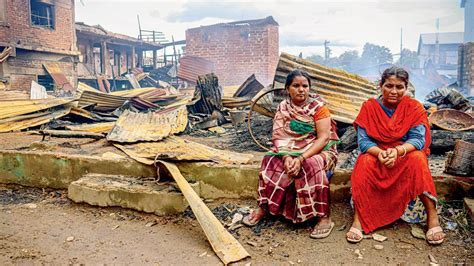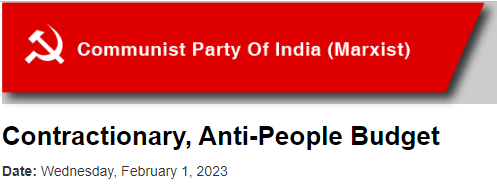Manipur has two regions - hills and valley. Valley has 10% of area of Manipur. Remaining 90% area of Manipur is hill regions. Valley is in the central portion of Manipur and the Hills surround the Valley. Manipur has a population of about 3 million people. 53% of them are Meitis and about 40% of them Kukis. Kukis live in hilly regions and Meitis in Valley regions. Meiti people include majorly Hindus and also Muslims, and Buddhists. Kukis are Predominantly Christians and Naga people.
In Manipur Legislative Assembly, there are 60 seats. Out of them 19 are reserved for STs - i.e., Nagas and Kukis. Forty are unreserved general constituencies. Out of these 40, 39 seats are won by Metei candiddates in the last election. Meiteis cannot buy land in the hill regions. But Kukis and other ST groups can buy lands in the valley. After the military coup of 2021 in Myamnar, there is an influx of large number of refugees into Manipur. These refugees have affinity to Kukis. However, in the valley, influx has created concern among Meiteis.
In April, Government authorities cleared three illegally built Churches in Imphal East district. Christian groups were upset with the decision. In the beginning of 2023, the State Government also initiated removal of illegal immigrants from reserve forest areas. Eviction drive in Churachandpur, Kangpokpi, and Tengnoupal was viewed with religious color.
In Manipur, there are at least four valley-based armed groups, several Naga groups and nearly 30 Kuki armed insurgent organizations. The proliferation of armed groups — at one point estimated to stand at around 60. Arms sale, narco trading and human trafficking are being employed to sustain anti-establishment momentum. Armed groups have political clout and influence election outcome. No political party in the state can refute the allegations of seeking support from the armed groups.
Manipur violence started with the HC verdict extending the ST status to Meiti Community in Manipur on 23rd April 2023. Specifically, violence started with burning of gym on 28th April at Sadbhavana Mandap. Burning continued on 30th with torching of Forest Range Office. Anglo-Kuki war centenary gate was burnt on 3rd May. In Churachanpur, several villages are burnt by Kuki groups. Meitei groups retaliated in Imphal valley areas.
The violence has resulted nearly 100 deaths and the burning of at least 1,500 buildings. More than 35,000 people are displaced and more than 300 relief camps are being operated in the state.
The Manipur government issued a shoot at sight order on 4 May. By the end of 3 May, 55 columns (70x55=3850 troops) of the Assam Rifles and the Indian Army were deployed in the region and by 4 May, more than 9,000 people were relocated to safer locations. By 5 May, about 20,000 and by 6 May, 23,000 people had been relocated to safe locations under military supervision.The central government airlifted 5 companies (600 troops) of the Rapid Action Force to the region. Nearly 10,000 army, para-military and Central Armed Police Forces were deployed in Manipur. On 4 May, the Union government invoked Article 355, the security provision of the Indian constitution, and took over the security situation of Manipur. As of 14 May, the total military build up in Manipur stood at 126 army columns (8820 troops) and 62 companies of paramilitary forces (7440 troops). According to one report about 40000 central government security personnel are deployed in Manipur.
On July 19, a video went viral showing two Kuki women, one aged in her 40s and one in her 20s being stripped, paraded naked on the streets, slapped and sexually assaulted by apparently Meitei men.The women were forcibly taken away from the police station when they were fleeing the violence hit areas by a mob. The younger victim were gangraped and one of the victims' father and teenage brother were killed by the mob while trying to protect the victim. Despite the complaint being lodged no action was taken by the police for more than 2 months until the video emerged.
A BJP MLA has appealed SC against the recommendation from HC for reservations to Meiteis. About 10 Kuki MLAs inlcuding eight BJP MLAs have demanded separate administration to the Kuki community. BJP vice president from Mizoram has resigned from BJP alleging state supporting demolition of Churches. An Archbishop from Kerala has criticised Modi of sponsoring violence in Manipur and destroying Christian communities of Manipur. Religious divide has caused Manipur violence and it is being disguised as tribal, political and caused by administrative lapses.
Related posts
Understanding Manipur – mediasyndicate













